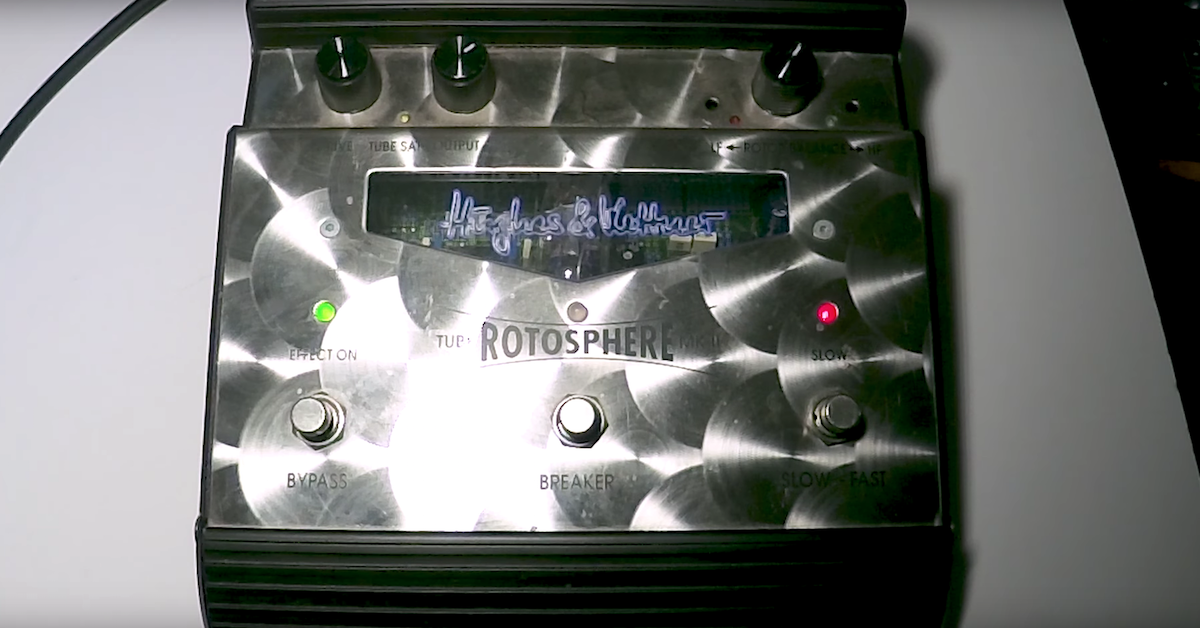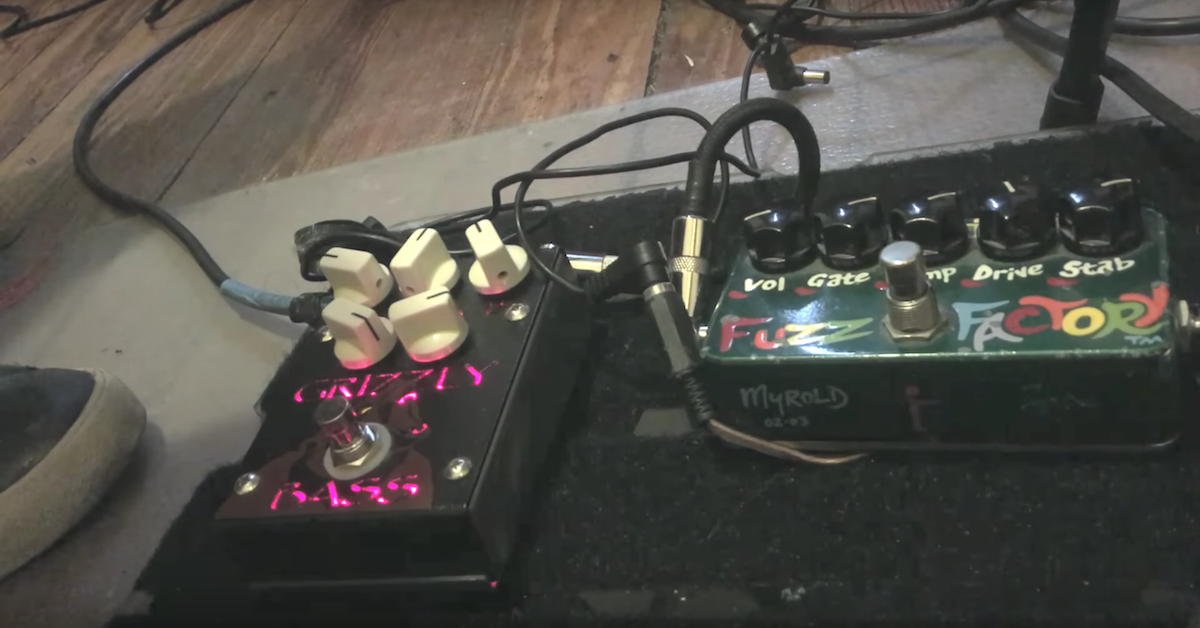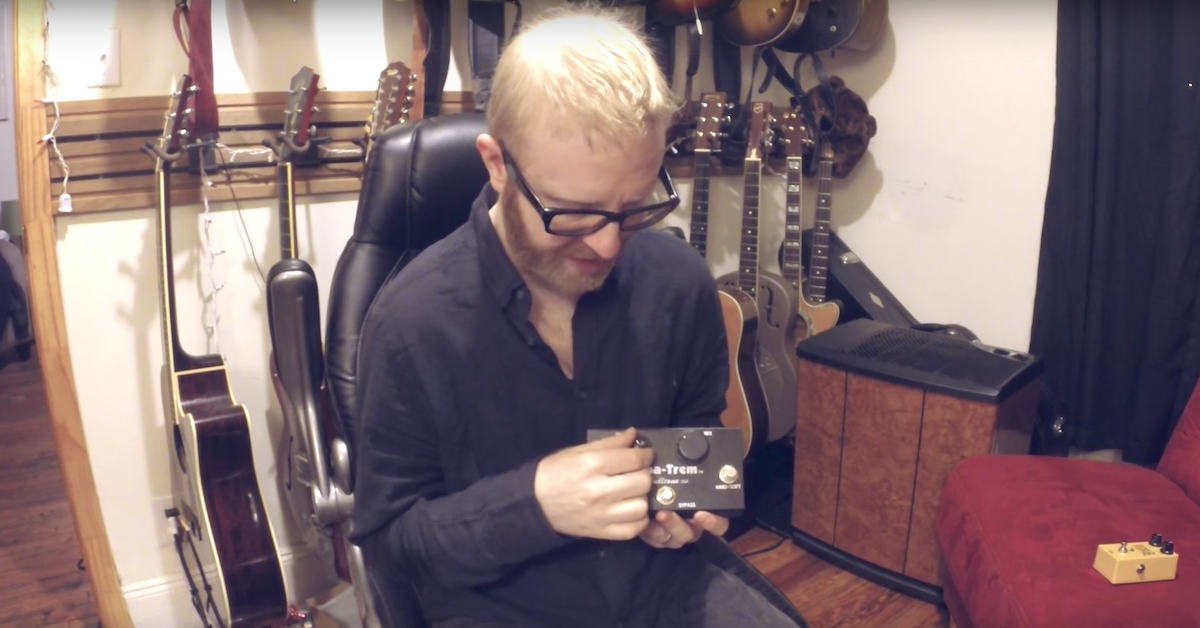7 Tips for Getting Guitar Tones from the 70s and 80s
Article Content
(Playlist of all the mentioned songs at the bottom of this article.)
1. Phasers
By the late 1960s, the sound of phasing started showing up on records. However, it wasn’t until the 1970s when it showed up in the form of a guitar pedal that it became widely used.
Genesis, Queen and a number of funk artists regularly used a phaser for some drippy sounds. I tend to think of phasers as filling out the sound — making it rounder.
Check out “Paranoid Android” from Radiohead to hear some phasing. You can also hear a phaser on “The Rover” by Led Zeppelin.
Phasers split your signal into two exact copies. Then it phase shifts one of the copies and combines it back in with the original. Unlike a chorus pedal, there is no pitch modulation happening.
Some early examples are the MXR Phase 45 and Phase 90, both of which are still available today. However, I opt for handmade versions like the JAM Pedals Ripple. I don’t find the reissue MXR pedals to sound exactly like the originals.
2. Flanging
Flangers also came into regular use in the late 70s/early 80s. Sometimes used subtly for a fake double tracking sound and sometimes in extreme ways for a jet plane sound. “Barracuda” by Heart and “You’re All I’ve Got Tonight” by The Cars both use a flanger.
Sometimes, people get confused between flangers and chorus effects. At certain settings they can sound similar, but when you make broader adjustments, they actually both sound quite different.
You can also use flangers for a faux double tracking sound. This can be heard on many guitar solos from the era.
An early example of a flanger was the Electro-Harmonix Electric Mistress. I have similar feelings about Electro-Harmonix… modern versions always break on me. Instead, I use the ADA Flanger. They were also an early contributor to the flanger world.
3. Chorus
You really can’t get the sounds of the 80s without chorus. It’s all over the place.
It would be hard to imagine The Pretenders without chorus — check out “Mystery Achievement”. Also, “Message In a Bottle” by The Police is another great chorus example. Nirvana’s “Come As You Are” might be my favorite chorus moment.
An early example of chorus was the Boss CE-1 which was released in 1976. This is the same chorus circuit found in the Roland Jazz Chorus. It pretty much set the standard. Boss later released the CE-3 chorus pedal in 1989.
Boss still makes popular chorus pedals. They sound great. My only complaint is the buffer. I’m not a fan of the buffer in Boss pedals. But, they make solid pedals. Check out builders like Analog Man that are making true bypass chorus pedals.
Flangers and chorus pedals both split your signal into two, and then delay one of the signals before they’re combined again. Typically, flangers use a shorter delay than chorus pedals. The longer delay time in chorus pedals results in a subtler effect.
4. Vibrato
Since we’re talking about chorus and flanging, we should have a side note abut vibrato.
A vibrato effect is similar to a chorus, except there’s no dry signal mixed in. Only the pitch modulated source is heard — 100% wet sound.
5. DI
By the late 70s/early 80s, engineers started using a DI for some guitar sounds. Nile Rogers, for instance, goes straight into the board. Mind you, it’s a $100,000 board! But, to really nail some of those 80s funk tones, plugging in direct will get you part of the way there. That and a Stratocaster.
I’ve had the most success using the UAD API channel strip with a little bit of compression.
Check out Chic’s “Le Freak” for a fine example of DI tone.
6. Delay
Another way to get a doubled guitar sound is by using a really fast delay. Try something in the 10-20ms range.
During this time period, analog and digital delays were being used a lot more. Tape delays weren’t as popular.
Pedals like the Electro-Harmonix Memory Man became popular. Check out “Sunday Bloody Sunday” by U2. It reacts quite differently than a tape delay. In particular, the decay of the repeats is notably different. As is the tone of the repeats.
On the digital side, the Boss DD-2 became available in 1983. Boss pedals became a staple in the 80s.
7. Compression
A great way to get an 80s guitar tone is a Stratocaster into a compressor pedal into a Roland Jazz Chorus. It’s an instant reminder of the time. It’s also hard to beat the chorus on a Jazz Chorus. It’s the best.
A compressor paired with a solid-state JC120 amp gets you some lovely New Wave clean sounds.
Solid-state amps sometimes get a bad rap. They’re not the proper pairing for blues or hard rock, but for clean chorus-sounding tones, they excel more than a tube amp. It’s all about matching. You wouldn’t serve ketchup with chocolate cake, would you?
Placing the compressor before the JC 120 will yield different results than placing it after the mics.
Conclusion
Short of buying oversized suit jackets and Ray-Bans, these tips should inject some late 70s/early 80s tone into your productions.
For more on working with effects, check out these videos and this article.
Video Tutorial






